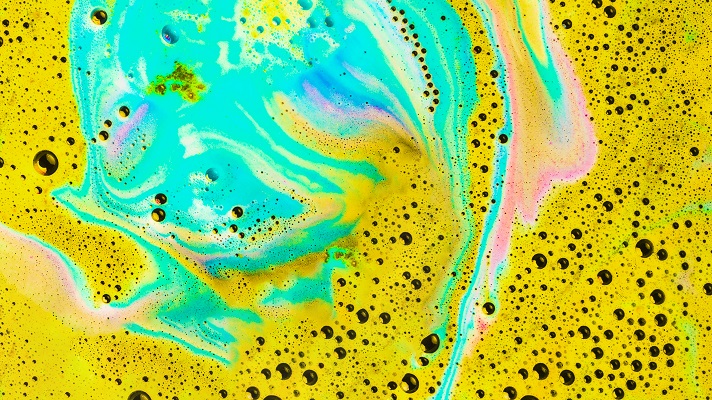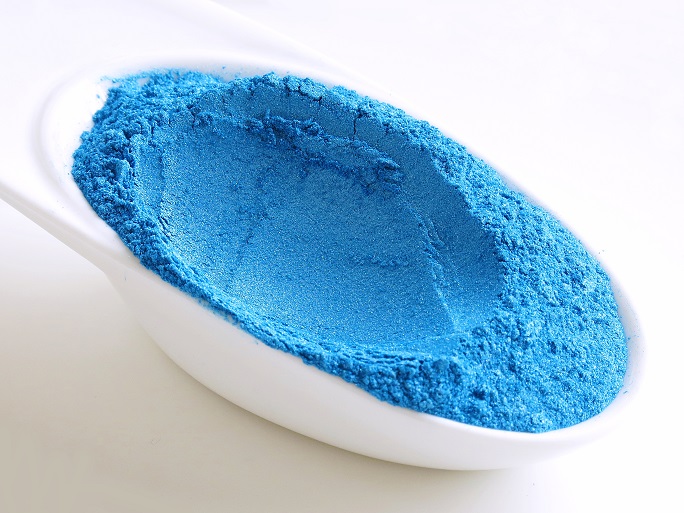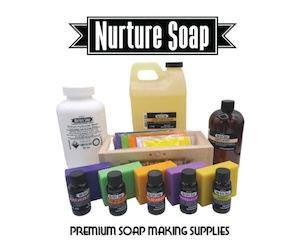Bath Bomb Colorants:
Bath bomb colorants are vital to understand when making bath bombs (and all bath and beauty products) for resale as well as, for the family.

Oftentimes, colorants used in bath bombs are dyes, lakes, mica’s, pigments and natural clays.
Not only can combine these colorants directly into the mix, but many enthusiasts use colorants (like mica’s) to decorate their bath bombs once they are molded and dried. This added touch gives bath bombs a creative-type feel to them. However, we’ll discuss that in another post.
First Things First With Bath Bomb Colorants:
If you take one step back and think about any ingredient in a bath bomb, the first thought should be, “what am I putting onto my body”, right?!
You’re going to be in large part soaking within these said ingredients. Of course, unless you’re using something like a shower steamer.
With that being said, but products from reputable sellers. Do your research, read reviews and ask questions.
Dyes:
According to ACS.org dyes are coloring materials that are applied as a solution and cling to whatever they are applied to. For example FD&C dyes or D&C dyes. (Food, Drug & Cosmetic).
Yeah okay, right? So what role do they play in bath bombs?
The great thing about dyes for bath bombs is that they are water soluble. This means they will disperse better in water. Secondly, they will dissolve without adding any extra ingredients to help them disperse, like polysorbate 80.
Another added benefit is their vibrant colors. When bloomed properly (which we’ll discuss) they give the bath bomb a nice deep vibrant pop of color. Add some embeds and you can create a color explosion.
Some bath bomb colorants, like mica’s, which are not water soluble (they are water insoluble), can leave a ring around the tub, which we’ll discuss shortly as well.
Some powdered forms of other colorants can also leave residue on the bottom of the tub when. Dyes tend to clean up very nicely, because of their water soluble trait.
One suggestion when making bath bombs with dyes after bloomed, is to incorporate the color into the mixture prior to adding your citric acid.
We’ll explain this in a second as well.
Dyes Part II: Blooming Process
This is an extra step that many bath bombers do to there dyes to help really bring them to life. The process consists of mixing the dye with water prior to adding them to the bath bomb mixture.
Simply add 1/8 teaspoon of dye (or recommended amount from manufacturer) with 1/2 teaspoon of warm water and allow it to disperse and dissolve.
From that point you can add the bloomed dye directly to your baking soda prior to mixing with citric acid and incorporate the color.
Why wait?
The reason is so you don’t set off the “fizzing” reaction prematurely. The reason your bath bomb fizz’s (in most cases) is due to the baking soda/citric acid within the recipe. If you add the baking soda/citric acid, then add bloomed dyes (in water), the reaction can happen prematurely.
Adding your citric acid last prevents this, every time!
Lakes:
Lakes are different in there chemical makeup. Lake differ from dyes because they are NOT water soluble, however they are water dispersible.
Furthermore, the best way to use lakes are adding an emulsifier, like polysorbate 80 to you mixture. Lakes, like dyes add a beautiful pop of color to bath bombs. We have used these types of colorants in our embeds. It’s like a surprise burst of color that occurs half way through the reaction.
Again, when making bath bombs, it’s a little bit of trial and error, no one is going to get a perfect professional bath bomb after one try. Using colorants is no different, you have to experiment.
Often, we’ll use dyes, clay’s and mica’s more then lakes. We have found these are just easier to work with, in our recipe’s.
Mica Powders:

Mica’s are often times found in cosmetics. Mica’s are what largely gives that sparkle and shimmer look. They are a naturally occurring mineral. These types of powders can also be manufactured. Meaning, they can be combined with other minerals like pigments/oxides (which still makes them a natural colorant).
However, also combined with food coloring (FD&C, then making them not natural).
Mica’s are sold everywhere, it seems and are relatively inexpensive.
Starter packs will give you a nice array of colors to try, and then when you find the colors you like, purchase those in a larger quantities. The issue with mica’s, like lakes, is they are water insoluble.
That’s right, you’ll have to add in an emulsifier, like polysorbate 80, for them to disperse in water. Mica’s tend to give you a nice color, but not the bold, vibrant colors like with dyes and lakes. They are however, a great go to if you are a soap maker as they tend to not bleed like dyes and other liquid colorants in soaps.
These powdered colorants are beautiful in there own right. You can purchase nearly any color under the sun. Mica’s are safe in bath bombs, and a rather inexpensive way of adding color to your bath bombs.
Natural Clays:
Last, but not least, we discuss clay’s. You guessed it, these are all natural colorants. Not only can clay add to the stability and hardness of a bath bomb, but they are great for your skin to soak in.
Keep in mind clays are not going to give you that vibrant color, like dyes and lakes. However, they leave their own beautiful, more subtle color.
Natural colorants also are not mass produced, so keep in mind colors may vary slightly, which is one of the characteristics that makes them so unique and beautiful.
Types of common clays include:
- Cambrian blue clay
- Pink Brazilian clay
- French green clay
- Rose clay
Final Thoughts:
Hopefully using these colorants in you bath bombs will get a little easier know about them. We hope you enjoyed our post, be sure to share on social media. Have a great day!
Resources:
- https://www.acs.org/content/acs/en/careers/college-to-career/chemistry-careers/dyes-pigments-ink.html



